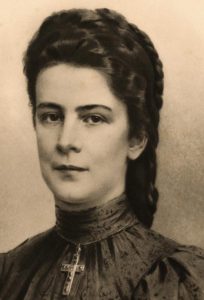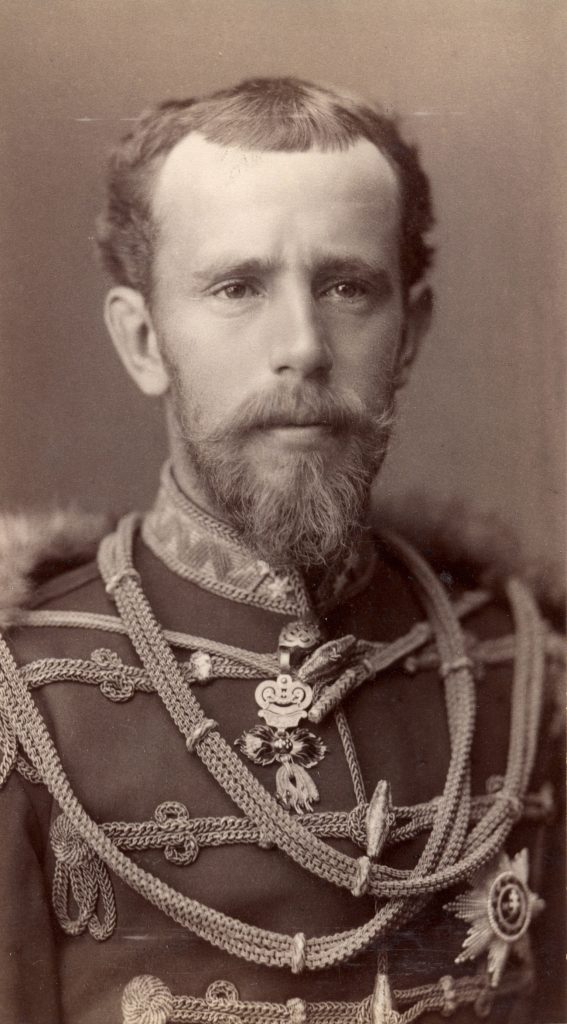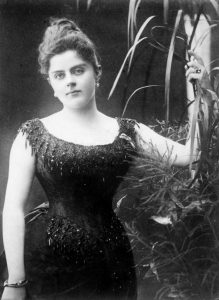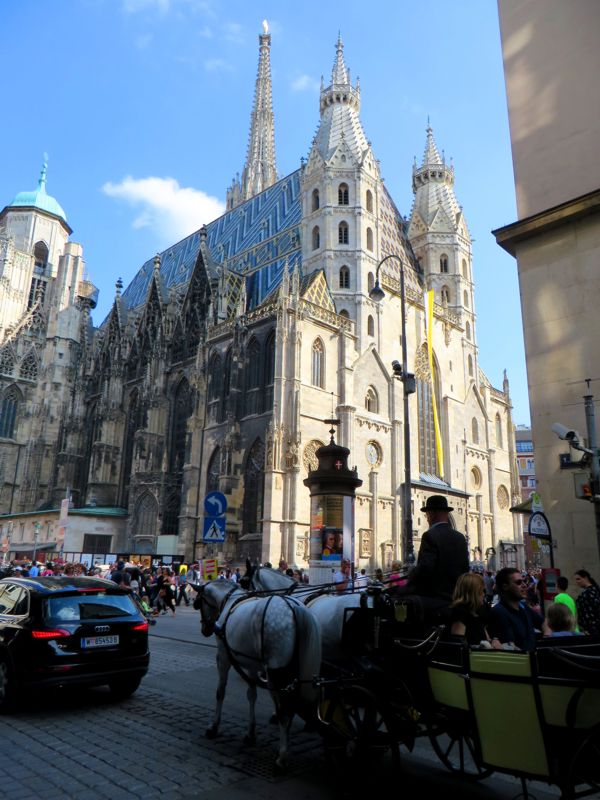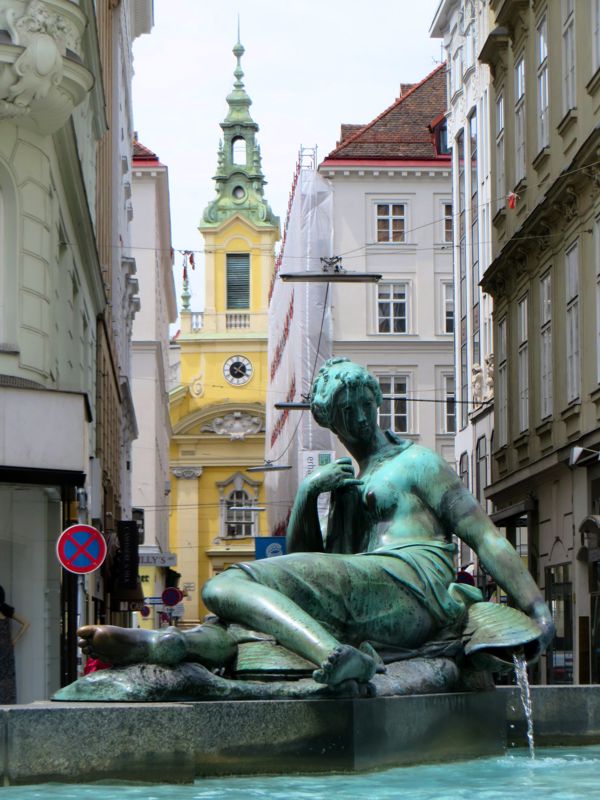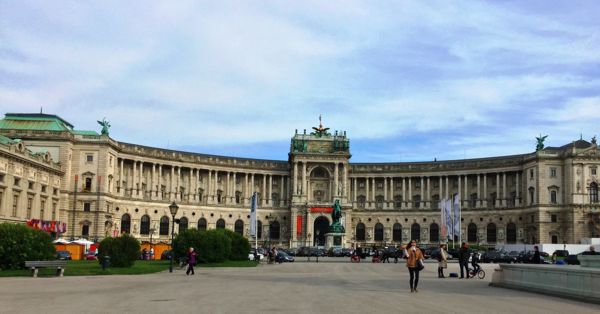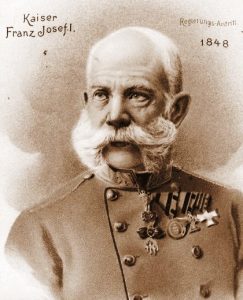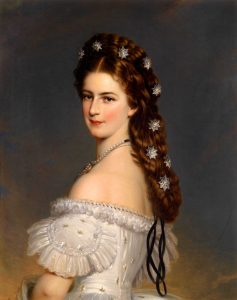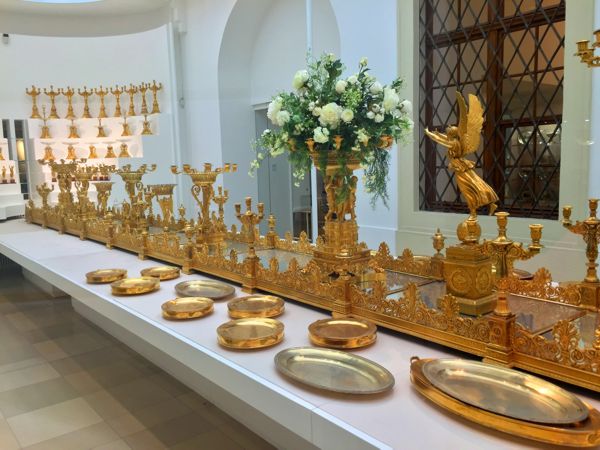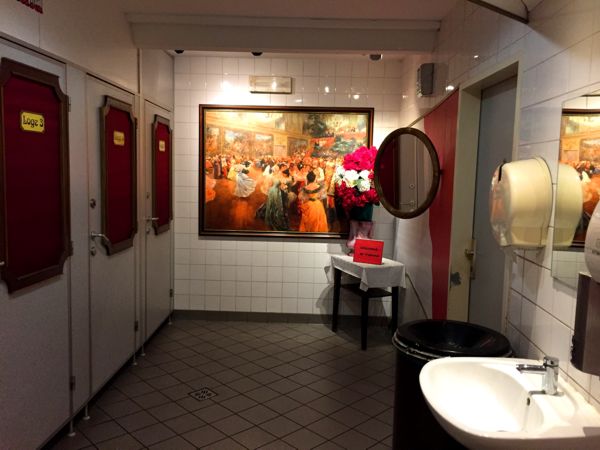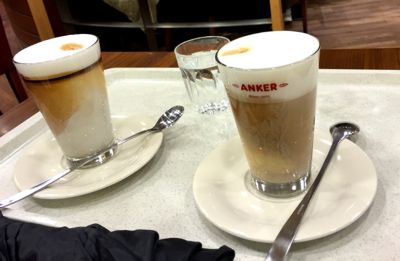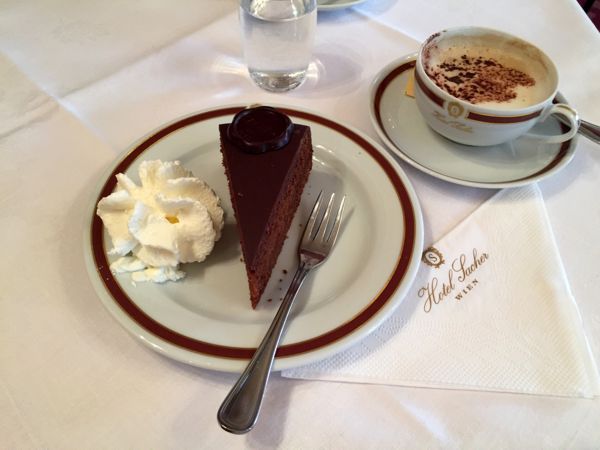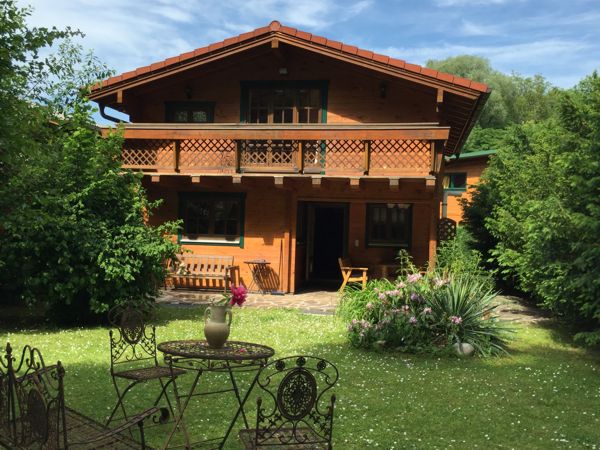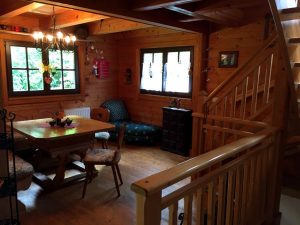When we started this blog, we thought it would be a fun way of sharing some of our European adventures along with some day-to-day observations of what it’s like to sometimes feel like a stranger in a strange land. I mean, really? The Dutch people swallow raw pickled herring whole! When we started our Vienna post, it was all about coffee, Strauss waltzes playing in public restrooms, and heavenly chocolate cake. Now we find ourselves caught up in the larger-than-life story of a woman who to this day is a rock star of royalty over here and we had never really heard of her. Her tale is almost finished and we will be returning shortly to our regularly-scheduled program of travel stories and photos. But for now, it’s time to finish up with the fate of the Empress and hope it makes us all realize that maybe some of our problems are not all that bad.
Finally more or less reconciled to the suicide of her son, Sisi decided it was time to resume her role as a “proper” wife to her husband. As a result, she bore her fourth and last child, Marie Valerie in 1864. Sisi was determined this time to play an active role in the raising and nurturing of the child. In the past, she had given up that task to her domineering mother-in-law. Poor Marie was nearly smothered by all the bottled-up mother love that Sisi had withheld from her older children. But before long the erratic and
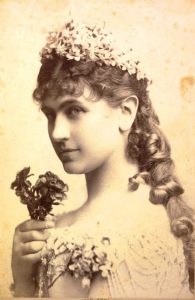
compulsive empress felt hemmed in again. She was probably feeling guilty for the marital exile she had enforced on Franz-Joseph. She had actually encouraged a relationship to blossom between her husband and the Austrian actress Katharina Schratt. That bond with the Emperor lasted for 34 years, but most reliable sources say the relationship was platonic. Sisi traveled constantly, never feeling contented and always searching for something she could never find. Once again, depression became her constant companion.
Even with all the scandals, suicides, and unhappiness, the public really knew very little about the empress except what they learned from the occasional article about her equestrian skills or her fashion sense. She was not much of an icon or legend. But this would all change in September 1898 in Geneva, Switzerland. At the age of sixty, Sisi, along with Countess Sztáray, her lady-in-waiting, was walking along the promenade to board the steamship Genève for Montreux when she was attacked. Her assailant was Luigi Lucheni, a 25-year old Italian anarchist who had originally planned to kill the Duke of Orléans. But the Duke had already left town.
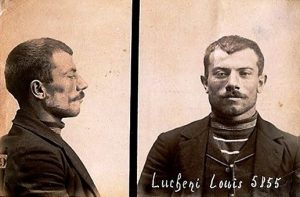
Unfortunately, a Geneva newspaper had printed an article the same day revealing that a woman traveling in Geneva under the assumed name and title of the Countess of Hohenembs was in reality, Empress Elizabeth of Austria. Lucheni quickly shifted his focus and went after this much more enticing target. He feigned a stumble as he approached the Empress, and seemed to reach out to steady himself. In reality, he stabbed her in the chest with a four-inch long sharpened needle file. Sisi collapsed but appeared to be uninjured. Countess Sztáray rushed her aboard the steamer, where she collapsed again. When she didn’t regain consciousness, the Countess told the Captain and Sisi was carried back to her hotel, where she died after a few final breaths.
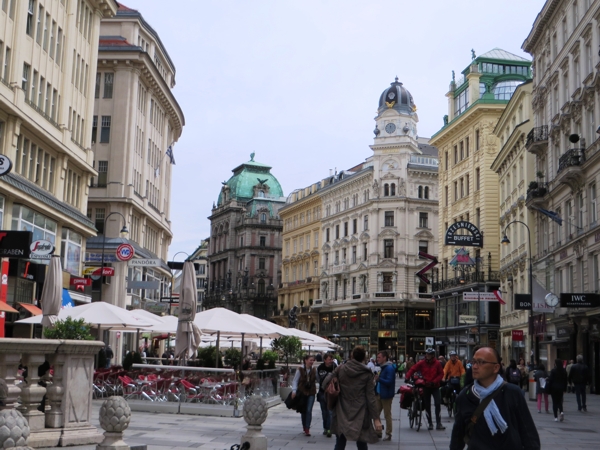
This is the point in our story where Sisi starts to become larger than life. Memorials, death masks, engraved prints of the assassination, portraits, and life-sized sculptures appeared everywhere. Suddenly, the unhappy empress who shied away from the public eye and just wished to be left alone, was front and center. With her name on everyone’s lips, a somewhat romanticized memoir was hastily created to satisfy public demand. Sisi was much better known after her death than throughout her 44-year reign as the Empress of Austria.
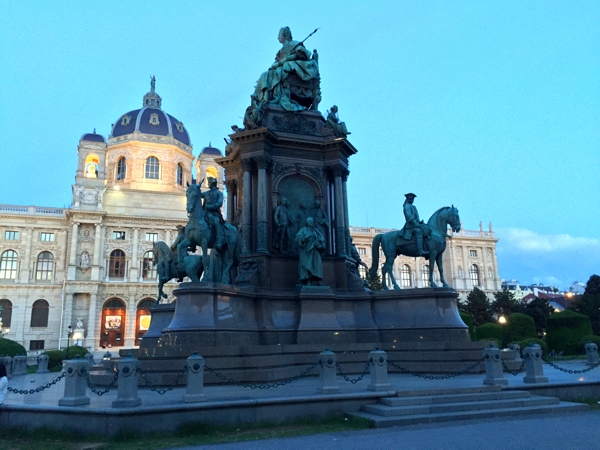
The legend of Sisi still shimmers today. Back in the 1950s, a trilogy of films starring cheek-pinchingly cute Romy Schneider as our ill-fated heroine was released to an adoring public. The films are pretty standard fare for their time. They pulled out all the stops with saturated color, gorgeous costumes, beautiful locations, soaring music, and scripts that were so far from the truth as to be almost comical. They have become classics in Europe along the lines of Gone With The Wind or The Wizard of Oz in America. The films get pulled out of the archives for an annual airing on German and Austrian television at Christmastime. They have actually generated a great deal of tourism for Austria. And Austria and Vienna are well worth visiting. During our stay, we spent a lot of quality time touring the royal apartments at the Schönbrunn and Hofburg Palaces. Also at the Hofburg palace complex, we took in the Sisi Museum, the imperial silver collection, and several world-class art and history museums. Even though all that money didn’t buy happiness for the Empress of Austria, it certainly bought at least some for us. For me, Vienna is in the same class as London or Paris as a destination, and that’s pretty rarified company.


